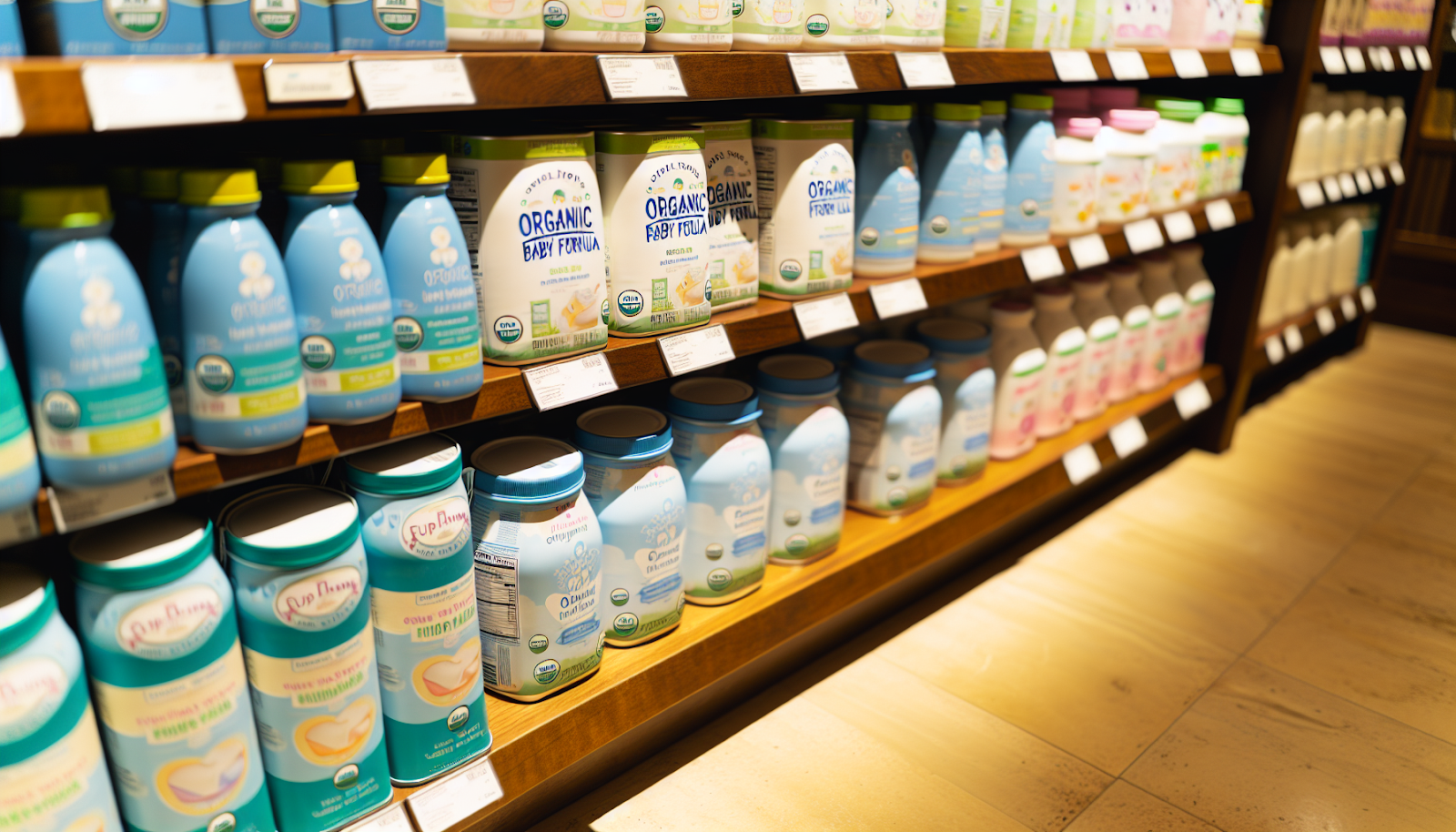
How to Wean Breastfeeding? Smooth Transition for Your Baby
How to wean breastfeeding? It can be challenging, and you likely have questions about doing it right. This guide outlines practical steps to make the switch while focusing on your baby’s comfort and nutritional needs.
From selecting the right formula to gradually introducing the bottle, we will provide you with supportive strategies to manage this significant change.
Key Takeaways
- Selecting the right formula involves ensuring FDA approval, considering organic options, and accounting for the baby’s dietary needs, cost, and availability, with pediatric consultation recommended.
- Transitioning from breast to formula should be gradual, replacing one breastfeeding session at a time with a bottle and mixing breast milk with formula initially to help adjust taste, in a patient process that respects the baby’s cues.
- Maintaining emotional connection and closeness during feeding is crucial, involving skin-to-skin contact and social interaction, while moms should focus on self-care to cope with the emotional challenges of the transition.
Finding the Right Formula for Your Baby
For a smooth transition when learning how to wean from breastfeeding to formula, choosing the right formula is crucial. Ensure the formula is FDA approved for safety. Organic options, like Bobbie Organic Infant Formula, offer extra protection against unnecessary additives.
These brands often have USDA Organic certification and avoid non-GMO ingredients, excluding corn syrup, palm oil, or maltodextrin.
Nonetheless, the selection of an apt formula extends beyond merely opting for organic or FDA-approved products. Equally significant is taking into account your baby’s individual dietary needs.
For instance, a hypoallergenic formula may be necessary for babies with specific dietary requirements. In most cases, pediatricians recommend a standard iron-fortified milk-based option unless there’s a specific dietary need dictating otherwise.
Lastly, remember to factor in the following when choosing a formula:
- The formula’s availability
- Your capacity to consistently supply it
- The cost differences between types of formula such as powdered, concentrated liquid, or ready-to-use options
In all these considerations, consulting with a pediatrician is crucial to ensure the switch meets your child’s nutritional needs.
How to Wean Breastfeeding: A Gentle Approach
The transition from breast milk to formula need not be an abrupt one. A gradual transition allows your baby’s diet and digestive system to adjust to the new food source. Specifically during stable periods, this adjustment becomes paramount; it’s advisable to steer clear of times of teething or sickness.
When figuring out how to wean from breastfeeding, begin by gradually introducing formula. Replace one breastfeeding session at a time with a bottle, choosing the feeding your baby seems least interested in.
Avoid forcing your baby to switch to formula and instead, be sensitive to their feeding cues. Offer a bottle approximately every 3-4 hours when they are more likely to be hungry.
Remember, transitioning should be a patient process that can take two or more weeks, allowing both you and your baby to adapt comfortably.
Introducing the Bottle: Best Practices
A smoother transition can be achieved by:
- Carefully selecting the suitable bottle
- Ensuring its correct introduction
- Opting for a bottle with an ultra-wide mouth and a breast-like nipple to mimic the natural breastfeeding experience
- Choosing the correct nipple hole size to prevent gagging or difficulty in milk extraction.
Create a calm, distraction-free environment for feeding times. Holding your baby in a semi-upright position during bottle feeding and using the tickling technique can encourage your baby to latch onto the bottle, mimicking natural breastfeeding positions.
Paced feeding, which allows your baby to pause and restart, can help in accepting the bottle.
When learning how to wean from breastfeeding, involving another caregiver to introduce the first bottle feeds can ease the baby into the new routine. T
his method is particularly useful with expressed breast milk for the initial feedings, reducing the chance of wasting milk as your baby adapts.
Combination Feeding: Balancing Breastmilk and Formula
Adopting combination feeding provides a balanced approach. It allows mothers to continue breastfeeding while also incorporating formula into their baby’s diet. This approach offers increased flexibility and the opportunity for other family members to bond with the baby during feedings.
To start combination feeding, plan to breastfeed when you’re with your baby and introduce formula gradually. The first few bottles can be given when the baby is calm, preferably by someone other than the mother, to help the body adjust and reduce the risk of engorgement or mastitis.
Maintaining breast milk supply is another crucial aspect of combination feeding. Here are some tips to help you:
- Fully breastfeed when you are with the baby
- Pump after formula or expressed milk feedings
- Explore different positions for bottle-feeding to distinguish it from breastfeeding
Remember, support during feeding sessions is vital for a successful transition.
Overcoming Common Challenges
Wean from breastfeeding to formula is not without its challenges. Bottle refusal is a common issue that parents face. If your baby refuses the bottle, try the following strategies:
- Change the feeding position
- Have someone else feed the baby
- Ensure a calm environment with minimal distractions
- Establish consistent feeding times
- Keep bottle-feeding sessions to around 30 minutes
These strategies can help encourage your baby to accept the bottle.
In some cases, persistent bottle refusal could signal a feeding disorder or illness. If your baby shows symptoms such as fever, vomiting, or difficulty breathing alongside bottle refusal, it’s crucial to seek immediate medical attention.
Another common issue is constipation, which may occur due to the larger proteins in formula. Signs of constipation in infants include:
- Infrequent bowel movements
- Hard stools
- Pain during bowel movements
- A tight belly
- Reduced interest in food
Maintaining Bonding and Closeness During Wean Breastfeeding
Ensuring the emotional connection remains intact during the shift from breastfeeding to bottle-feeding is of utmost importance. Skin-to-skin contact can help maintain this emotional connection. During bottle feeding, you can maintain skin-to-skin contact by snuggling and ensuring physical closeness to your baby.
Social interaction is significant in developing and maintaining the baby’s emotional connection with the caregiver. Activities that encourage interaction, like snuggling, playing, and reading, can help maintain this bond.
You can further enhance bonding by participating in activities like baby wearing, tummy time, and interactive caregiving activities like diapering, bathing, and dressing.
Self-Care for Moms During Wean Breastfeeding
The shift from breastfeeding to bottle feeding can pose difficulties for mothers, making self-care a vital aspect. Self-care helps maintain physical and emotional health, particularly in managing emotions like guilt that can arise from disparities between expectations and realities of feeding practices.
Open conversations about feeding challenges and emotions, as well as seeking out online communities, can help mothers validate feelings, reduce isolation, and gain support. Remember, it’s essential to respect your feeding choices and acknowledge that each journey is unique.
Stress management through mindfulness and relaxation techniques, ensuring adequate sleep, and taking personal breaks can contribute to self-care. Remember to prioritize your needs and set personal boundaries.
Acknowledging and celebrating your accomplishments in the feeding transition can also boost your morale.
Temperature Control: Ensuring Optimal Feeding Experience
Optimizing the milk’s temperature can markedly influence your baby’s feeding experience. The optimal temperature for formula feeding is 35-37°C, and the preferred temperature for breastmilk is around 99°F (37.2°C) which falls within the body temperature range.
A bottle warmer can provide even heat distribution, avoiding hotspots that could scald the baby and preserving the milk’s nutrients. Warming breastmilk can be effectively done by placing the bottle in a bowl of lukewarm water or using a bottle warmer.
Before feeding, test the temperature of the milk by squirting a few drops on your wrist. This practice can ensure a neutral temperature, providing your baby with a comfortable and enjoyable feeding experience.
Avoiding Common Mistakes During Wean Breastfeeding
Dodging prevalent mistakes can facilitate a smoother transition process. One such mistake is mixing errors in formula preparation, which can lead to nutrient imbalances and other health issues. Stirring rather than shaking to prepare formula helps avoid extra air, which could cause discomfort.
Proper storage and discarding practices are crucial to avoid bacterial contamination. Always follow brand-specific instructions for formula preparation, storage, and discarding.
Forcing the transition to formula can create a negative association with feeding, making further introduction of formula challenging. Keep a clear distinction between solids and milk in your baby’s diet by never mixing rice cereal or other solid foods into the milk, thereby preventing feeding difficulties.
How to Wean Breastfeeding with Else Nutrition Toddler Formula
Should you be in search of a plant-based alternative for weaning your baby off breastmilk, Else Nutrition Toddler Formula might just be the perfect option. This formula offers a unique blend of nutrients designed to meet the nutritional needs of toddlers, making it a great alternative to cow’s milk based formula.
The formula is made from a blend of almonds, buckwheat, and tapioca, providing a well-rounded nutritional profile for your growing baby. It’s free of dairy, soy, and gluten, making it a suitable choice for babies with food sensitivities or milk protein allergy.
Else Nutrition Toddler Formula is also a great option for parents looking for a more sustainable and eco-friendly choice. It’s produced with minimal environmental impact, and the company is committed to sustainable farming practices.
Wean Breastfeeding Summary
Transitioning from breast to formula feeding can be a challenging but rewarding journey. By choosing the right formula, gradually introducing the bottle, maintaining bonding and closeness, and avoiding common mistakes, the process can be smoother. Remember, every baby is unique, and what works for one might not work for another. So, be patient, and remember that you’re doing your best for your baby.
Frequently Asked Questions
How do I transition my breastfed baby to formula?
Slowly transition your breastfed baby to formula by replacing one breastfeeding session a day with a bottle of formula or expressed breastmilk. This gradual approach can help your baby adjust to the change and minimize discomfort.
How long does it take a baby to adjust to formula from breast milk?
It takes two to six weeks for a baby to adjust to formula from breast milk.
Can I just stop breastfeeding and switch to formula?
It’s best to gradually transition from breastfeeding to formula over a few weeks, replacing one feeding session at a time to give your baby time to adjust. This method will help both you and your baby through the process.
What is the best way to introduce formula to a breastfed baby?
The best way to introduce formula to a breastfed baby is to gradually replace one breastfeeding session with a bottle feeding, preferably the one your baby is least attached to. Mixing breastmilk with formula can also help your baby adapt to the new taste.
How can I maintain my bond with my baby during the transition?
You can maintain your bond with your baby during the transition by engaging in activities that promote social interaction, such as snuggling, playing, and reading together. This will help strengthen your connection with your baby.
The content and advice provided in this article is for informational purposes only and is not a substitute for medical diagnosis, treatment, advice for specific medical conditions. Always consult a pediatrician to understand the individual needs of your child. The article expresses solely the views of the article editor.

